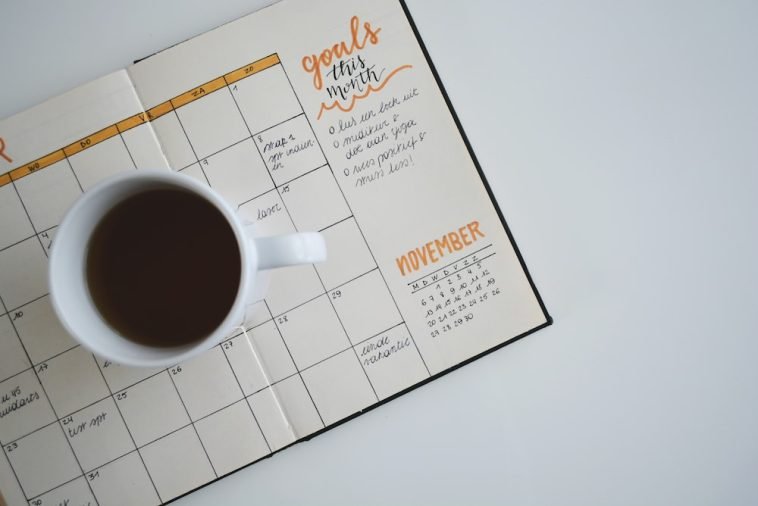Introduction.
Managing social media can sometimes feel like a whirlwind of never-ending to-do lists, forgotten posts, and the constant pressure to come up with engaging content.
Staying on top of multiple platforms, publishing consistently, and ensuring that your content remains relevant and valuable is a juggling act, one that can become overwhelming without the right strategies in place. That’s where a content calendar comes in.
Think of a content calendar as your social media roadmap—a plan that helps you schedule and organize your posts strategically.
It’s not just a tool to make your life easier; it can significantly improve the quality and impact of your social media presence.
With so much content vying for attention online, having a well-planned schedule ensures your posts stand out, reach the right audience, and support your larger goals.
But why exactly should you put effort into building one?
Let’s break down the reasons.
Why a Content Calendar is Worth Your Time
1. Consistency is Key.
Posting sporadically isn’t great for engagement. Social media algorithms, like those on Instagram or TikTok, favour consistent posting, and so do your followers.
A content calendar helps you space out your content evenly and maintain a steady rhythm that keeps your audience engaged.
2. Reduce Last-Minute Scrambling.
You know those days when you suddenly realize you haven’t posted anything in a week? Avoiding the panic of “What do I post today?” is a huge benefit.
With a calendar in place, you’ll know exactly what’s going up and when making your life a lot less stressful.
3. Better Content Quality.
Rushing to put up content often means settling for low-effort posts that don’t align with your brand. By planning, you can put more thought into each piece, using visuals and messages that resonate with your followers and fulfil your marketing objectives.
4. Strategic Posting.
Some content works better at specific times or in coordination with ongoing events, holidays, or promotions. A content calendar helps you align your posts with these opportunities for maximum impact.
How Do I Create a Content Calendar For My Social Media Accounts?
Building a content calendar may sound intimidating, but I’ll walk you through it. Here’s what you need to do:
1. Set Clear Goals.
Before you create a single post, think about what you’re trying to achieve. Are you aiming to boost engagement, drive traffic to your website, or increase brand awareness? Knowing your goals will help you tailor your content and measure its success.
2. Choose Your Platforms.
Different platforms have different vibes and demographics. You don’t need to be everywhere; pick the ones that make the most sense for your brand. Instagram is great for visual content, LinkedIn is better for professional updates, and TikTok is perfect if you’re targeting younger audiences.
3. Brainstorm Content Ideas.
Next, think about the types of content you can create: behind-the-scenes posts, educational tips, entertaining reels, infographics, or user-generated content. Keep in mind your audience’s interests and make sure your content is varied enough to keep things fresh.
4. Map Out Your Calendar.
Use tools like Google Sheets, Trello, or dedicated social media scheduling apps like Buffer or Hootsuite to organize your posts.
Break your calendar down into weeks and months. Note down the date, type of post, caption ideas, hashtags, and any visual elements needed.
6. Create Your Content in Batches.
Batch-creating your content is a huge time-saver. Dedicate a day to creating graphics, another to writing captions, and a third to scheduling everything. It’s much more efficient than switching back and forth between tasks every day.
7. Review and Adjust.
Social media trends can change fast, so be prepared to make adjustments. Your calendar shouldn’t be set in stone. Track your performance regularly and tweak your strategy as needed.
Pros and Cons of Using a Content Calendar
Pros:
- Saves Time: Once your content is planned, you can focus on other aspects of your business.
- Reduces Stress: Knowing your posts are scheduled helps you relax and be more strategic.
- Boosts Consistency: A structured plan ensures you post consistently, which is great for audience engagement.
- Improves Content Quality: Planning gives you time to create and refine high-quality posts.
- Better Collaboration: If you work in a team, it’s easier to coordinate and avoid overlapping efforts.
Cons:
- Can Feel Restrictive: Sometimes, it’s nice to post spontaneously. A rigid schedule might limit your flexibility.
- Initial Setup Effort: Building a content calendar takes time and effort upfront.
- Risk of Outdated Content: If news or events change, pre-scheduled posts might need last-minute adjustments.
FAQs
1. What tools should I use to create a content calendar?
It depends on your needs. Google Calendar is great for beginners. More advanced options like Trello, Asana, or dedicated tools like Buffer or Hootsuite offer features like drag-and-drop scheduling and performance analytics.
2. How often should I post?
The ideal posting frequency varies by platform. On Instagram, aim for 3-5 times a week, while Twitter might need daily updates. Quality always beats quantity, though.
3. Can I change my content calendar once it’s set?
Absolutely! Your calendar is a flexible tool, not a rigid contract. Feel free to adjust as you monitor performance and trends.
4. Do I need a content calendar for every social platform?
Not necessarily. If some platforms are more crucial for your brand, focus on them first. You can expand to others as needed.
5. How do I measure the success of my content calendar?
Track metrics like engagement rates, follower growth, and website traffic. Compare these numbers to your original goals to see if your strategy is working.
Conclusion.
A content calendar can be a game-changer for managing your social media effectively. It not only saves you time but also boosts the quality and reach of your content.
As you implement your new calendar, keep an eye on what works and don’t be afraid to make changes. Now, the real question is: What content are you most excited to plan for next?





GIPHY App Key not set. Please check settings